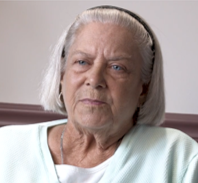Living Well with Kidney Disease
An estimated 850 million people have kidney disease globally; nearly 10.5 million of these individuals require dialysis or a kidney transplant.1 Each of these remarkable people have a story, a family and an adventure ahead of them; they deserve to live well with kidney disease.
As a global leader in renal care innovation, we are proud to honor our patients, and their families and healthcare professionals, during World Kidney Day and every day. We are committed to advocating and innovating for their access to care, so they can live well with kidney disease. Our goal is to help them feel empowered to partner with their healthcare team to make decisions that result in the best possible outcomes and quality of life.
Our commitment to access to care has taken on new meaning through the COVID-19 pandemic when kidney patients' wellbeing is at an elevated and sustained risk from the virus. Research shows that kidney patients are at a higher risk of contracting COVID-19 and more likely to experience severe outcomes from the virus.2,3 This is why we need to support patient access to home dialysis, as it allows them to more safely social distance while receiving life-sustaining dialysis therapy.
We invite you to learn more about living well with kidney disease through some of our amazing patients.

I chose peritoneal dialysis (PD) because of the flexibility. It allowed me to choose the time of day when I would do my treatments. They became part of my daily routine, and I could still do all the activities that I enjoy. Most importantly, I got to go on living my life and raising my kids.
Shazwali from Malaysia
When Shazwali found out he had chronic kidney disease, he gave up. He didn’t want to accept that he had kidney disease; he was angry and often isolated himself from his wife and children. He credits his wife for providing him the strength to continue being here for his children, so he started peritoneal dialysis therapy in his home. Shazwali’s journey didn’t end with dialysis; he received a wonderful gift when his brother matched to be his transplant donor.

Freedom is the big thing about being on PD. You don’t have to drive for miles, three times a week for in-center hemodialysis treatments. My days are free, so I can do whatever I want; I only do therapy while sleeping. If I keep feeling the way I do now, I plan to do a lot of fishing this summer at the lake.”
Tom from Canada
Tom has managed diabetes and high blood pressure for four decades. Over time, these diseases took their toll on his kidneys, which left him feeling tired and ill most days. When his kidney function declined to the point that he required dialysis, Tom’s doctor started him on PD with remote patient management (digital health), which allows his healthcare team to remotely view and help manage his treatments.

PD doesn’t require me to go to a clinic three days a week. It’s done at night, which allows us to do just about everything we’ve always done.
Deborah from the United States
Deborah and her husband have been riding motorcycles for nearly four decades. She has known since her 20s that she had kidney damage that slowly progressed over time, requiring her to perform dialysis for the past couple of years. When initiating dialysis, Deborah and her husband were suddenly faced with a decision about her care; what modality would allow them to maintain their active lifestyle? They chose PD.
Deborah and her husband embraced this freedom and took an extended cross-country trip on their motorcycle. The trip spanned the United States from Pennsylvania to California and back; all well-coordinated through their healthcare professionals and Baxter, who shipped the necessary products to them along the way.

The transition from hemodialysis to PD was good for me. It is milder and I feel better, which puts me in a better position to get tested for a transplant.
Ania from Poland
Ania is an HR specialist, who works actively in food cooperatives and finds time to pursue her dream of becoming a dog behaviorist. At the age of 11, Ania was diagnosed with diabetes; then three years ago, she had to initiate dialysis. After two years on in-center hemodialysis, Ania investigated the option of home dialysis with PD. With the support of other patients and her doctor, Ania has now been on PD for the past year and enjoying her active lifestyle.
Safer at Home: Dialysis During COVID-19
In addition to dialysis patients being at higher risk for contracting viruses, a recent study shows those who contracted COVID-19 experienced a nearly 25% mortality rate, much higher than those who do not get the virus.4 The increased risk of COVID-19 to dialysis patients is especially noticed in minority groups. According to the U.S. Centers for Disease Control and Prevention, minority patients experienced up to 4-times higher rate of hospitalization and up to 2.8-times higher mortality rates than white patients.5 The best defense is supporting their access to home dialysis, where they can more safely social distance.
25% Higher Mortality
Data show dialysis patients with COVID-19 experienced an increased mortality rate.
Added Risk for Minorities
Data show minority patients experienced up to 4-times higher rate of hospitalization and up to 2.8-times higher mortality rates than Caucasian patients.